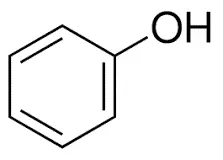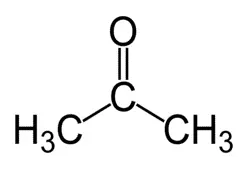Type of HPLC Detectors | UV, PDA, MS & More
Table of contents
- Introduction and outcome
- 7 Commonly used HPLC Detectors
- UV/Visible HPLC detector
- Photodiode array (PDA) detector
- Fluorescence (FL) detector
- MS (mass spectrophotometer) detector
- Refractive index (RI) detector
- Evaporative light scattering detector
- 7 Steps HPLC Detectors Selection procedure
- Conclusion
- FAQs
HPLC Detectors
HPLC detectors are used used for identification and quantification of pharmaceuticals and hence they play an important role in controlling the quality of the pharmaceuticals. The detector act as the eye of any method. No matter how good the method is , if detector is not suitable it will not give the correct result . Most of the chemist have a lot of confusion related to HPLC Detectors selection and that is why I decided to share skill-base knowledge on this topic. In this article, I will discuss types of HPLC detectors, detectors selection process, detector characteristics and frequently asked questions. After reading the post all your doubts will be cleared and your knowledge will increase to the next level.

7 Commonly used HPLC Detectors
The following detectors are 7 commonly used HPLC Detectors in the pharmaceuticals analysis:
- UV/Visible HPLC detector
- Photodiode array (PDA) detector
- Fluorescence (FL) detector
- MS (mass spectrophotometer) detector
- Refractive index (RI) detector
- Electrochemical (EC) detector
- Evaporative light scattering detector(ELSD)
UV/Visible HPLC detector
It is one of the most commonly used detectors in the pharmaceutical analysis. Most pharmaceuticals have UV, which is why this is widely used. This detector can not be used for those pharmaceuticals having no UV absorbance. For example, let us consider Phenol and Acetone:


Both Phenol and Acetone contain multiple bonds in the structure and hence they have very good absorbance in UV. Such compounds can easily be analysed on HPLC using UV detector.
HPLC UV detector suitability
- Compounds must have multiple bonds in the structure
- The must have UV absorbance
HPLC detector wavelength selection procedure
- Choose the wavelength where is maximum absorbance for both main analyte and its impurities
- Solvent cut off must be considered while selecting the wavelength to avoid noise in the chromatogram
- Following are the UV cut off of commonly used HPLC solvents:
| Solvent | UV cut off (nm) |
| Methanol | 210 |
| Ethanol | 210 |
| Isopropyl alcohol | 210 |
| Acetonitrile | 190 |
| Acetone | 310 |
| Water | 191 |
| Acetic acid | 260 |
| Formic acid | 210 |
| Hexane | 195 |
| Ethyl acetate | 255 |
| Diethylamine | 210 |
Photodiode array (PDA) detector
In Photodiode array (PDA) detector, analysis can be done at multiple wavelengths simultaneously (in wavelength range). It is very helpful for method development while sleeting the wavelength.
Fluorescence (FL) detector
This is not a commonly used detector and it is used for particular type of compounds. Fluorescence detector operates based on the principle of measuring the fluorescence emitted by certain compounds when they are exposed to the excitation light (Xenon lamp). Compounds containing fluorophores like Vitamine A and Vitamin E can be analysed on this detector.
MS (mass spectrophotometer) detector
This is a highly sensitive and selective HPLC detector. It is used as universal detector but it is not commonly used detector. It is mainly used for impurity identification, structure characterisation and genotoxic impurities quantification. Due to nits high cost it is impossible to use this detector for routine analysis. Compounds like sucrose
Refractive index (RI) detector
It is not a commonly used detector . It has several limitations like low sensitivity is low, can be used only in only in isocratic mode and can not be used in the gradient node. This detector measures the refractive index of the analyte in relation to the solvent. Compounds like Glucose and Sucrose are analysed on RI detector.
Electrochemical (EC) detector
This is a sensitive and selective HPLC detector but it is not a commonly used detector.This detector is based on oxidation-reduction principle. Compounds like Phenol and Polyphenol can be analysed on Electrochemical (EC) detector
Evaporative light scattering detector
This is universal detector but is is not a commonly used detector. It has several limitations like it is not linear and low volatile compounds can not be analysed on this detector.
7 Steps HPLC Detectors Selection procedure
The following are the 7 Steps HPLC Detectors Selection procedure:
- Analyte and impurities suitability: Detector must be suitable for both analyte and its impurities
- Sensitivity (detection limit)
- Cost of detector and analysis cost
- Availability
- Isocratic and gradient mode suitability: Preference should be given to that detector which can be used both isocratic and gradient mode.
- Validability: Preference should be given to that detector which which is linear and method can be validated
- Solvent/Mobile phase reactivity: Preference should be given to that detector which which is not reactive with Solvent/Mobile phase .
Conclusion
HPLC detector selection needs knowledge along with innovative skills. I hope, this article have cleared al your doubt related to HPLC detectors and enhanced your knowledge to the next level. Any query or suggestion related to this article write in the comment section and I will cover the same in upcoming blog.
You may also want to check out other articles on my blog, such as:
- Difference between HPLC and GC
- Need of Chromatographic Method in Drug Development
- How to decide system suitability test (SST)?
- Allowable GC Method Adjustment
- How to develop the HPLC method for basic compounds?
- How to develop the HPLC method for acidic compounds?
- How to develop the HPLC method for non-polar compounds?
- What should be the Analytical method development approach?
FAQs
What are detectors are used in HPLC?
Detectors like UV/Visible Refractive index, Electrochemical and Mass are used in HPLC
What is the best detector in HPLC?
UV/Visible detector is the best detector in HPLC due to its sensitivity , selectivity and cost of analysis
What is a PDA detector in HPLC?
In PDA detector analysis is performed between the range of two wavelengths and hence at in single run data can be extracted at several wavelengths. It is used during HPLC method development.
What is RI detector in HPLC?
RI detector measure the refractive index of analyte in relation to the solvent. But it has several limitations like low sensitivity and it can not be used in gradient mode.
What is a dad detector?
DAD is Diode array detector and its principle is same as PDA detector.In DAD analysis is performed between the range of two wavelengths and hence at in single run data can be extracted at several wavelengths as per requirement. It is used during HPLC method development.
Why is a PDA detector used in HPLC?
In PDA detector analysis is performed between the range of two wavelengths and hence at in single run data can be extracted at several wavelengths. It is used during HPLC method development. That is why PDA detector is used in HPLC.
What is the difference in a UV detector to a PDA detector in HPLC?
In UV detector analysis can be performed at selected wavelengths (one or two wavelengths) whereas in PDA detector data can be extracted at several wavelengths as per requirement in a single injection.
Abbreviations
- HPLC: High pressure liquid chromatography
- PDA: Photodiode array detector
- DAD: Diode array detector
References
Analytical chemistry; Gary D. Christian



 Next Post
Next Post
Very well done dear,
Nice explanation , keep it up
Informative article. Easy to read and understand.
Very helpful knowledge sir
please share details knowledge of different types of detector used in all instruments like HPLC GC IC & Icpms
With Example.
Thanks 🙏
Regards
Gaurav Singh